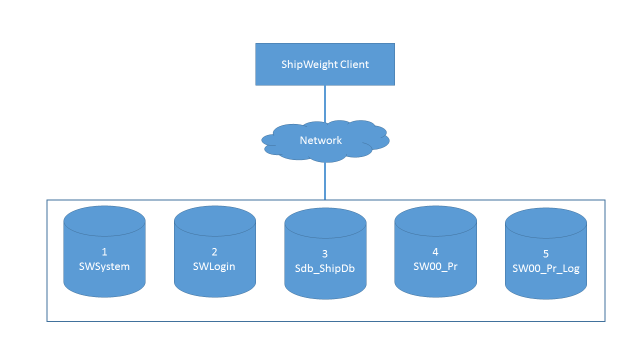ShipWeight is a client-server application where the application runs local on your local machine, while the data is stored on a central SQL Server and shared between all users. Any number of client machines can access the same data, and users can work simultaneously on the same data. ShipWeight has at least 5 different databases in use. Some data is project related and some data is shared between all projects. This is outlined below.

1.The SWSystem database holds system data that is shared among all projects. This is where work breakdownstructures, parameters, methods, and similar system data is stored. There can only be one SWSystem database, but it may contain several system. A change to a system in this database will apply to all projects relating to this system.
2.The SWLogin database stores all ShipWeight users and user groups and information about the permissions given to the groups and users assigned to the groups. There can be only one SWLogin database.
3.The sdb_ShipDB database holds the historical weight data from previous projects and this is the data that is used for the regression curve in the parametric estimation. There can be more than one historical database, but usually there is only one.
4.The project database holds the project data. A project database can store several projects, but you can also have several project databases. The project databases always starts with SW followed by a number (the number specifies the system relation).
5.Project databases always comes in pair, where the primary project database has a secondary database with the same name, but ending with _Log. This secondary log database stores all new entries, but also all changes and deletions.
The work breakdown structure (WBS) is the main coding structure in ShipWeight and has its main function in that all items must be assigned to a WBS group and the combination of the WBS group and ItemNo is what uniquely identifies a weight item.
All parametric estimation is done according to the work breakdown structure, and thus the methods for the parametric estimation is related to the WBS weight groups. This means further that to be able to exploit historical projects it means that the WBS must be shared between projects.
To summarize:
•All weight items must be assigned to a WBS group
•The WBS coding must be shared between projects for estimation purposes.